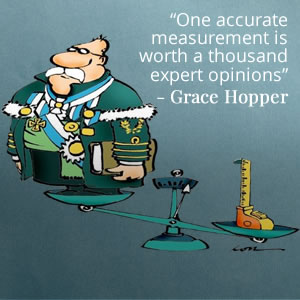Chapter 2
Communications measurement for Non-Profit organisations

Communications measurement for Non-Profit organisations: what it is, why it’s important and why it is an important communications investment
Have you ever had a moment in your life where someone just wasn’t taking you seriously? Remember that sinking feeling you got in the pit of your stomach when you realised that they might be nodding and making the right noises, but you know they’ve already dismissed the importance of what you have to say?
That’s the same feeling communications professionals have had for years when talking to the executive of their organisation. As a discipline, we’ve relied too much on the luck of the draw – having a senior leader who intuitively ‘gets’ that PR is important, and is therefore prepared to invest in it and listen to it.
But that really isn’t going to cut it any longer. If the last hundred years was defined as the century of silicon, then the 21st century will surely be the defined as the data century. Take, for example, the fact that 90 percent of all human data has been created in the last two years.
Large-scale data is revolutionising everything from medicine to transport. In many ways it is a democratising factor and is levelling a playing field previously stacked in favour of the big guys.
And it’s bringing with it new opportunities to measure the impact that we have on the world. Data analysis – previously only available to multinationals spending tens of millions a year on complex models or information gathering – is now available for free, or at low cost online. Using tools like Google analytics you can see in real time the impact your communications are having – on sales, information distribution, engagement and activation.
If you couple this with a common-sense approach to defining communications objectives in terms of business objectives, Non-Profits have a huge opportunity to change the nature of the conversations happening within their organisation and to demonstrate the true value of PR.
The key around defining great objectives is to get ‘under the hood’ of what you’re trying to achieve and think about how you can measure the end result, rather than just the communication message and channel. For example, one story that has stuck with me was some communicators who were tasked with improving the rate of hand washing within a hospital.
They sat down and thought how they were going to measure their success. In the end they didn’t measure the number of emails they sent or posters they put up. They didn’t measure people’s recall of the campaign, or do a perception survey on it. They simply measured the amount of liquid soap the hospital used and tied it back to what they did when. Simple. Effective. Focused on the business result. And very low cost.
All because they asked themselves the key question, “what is the business objective we’re trying to achieve?” More than that, though, they asked themselves that question at the start. It still amazes me how many times businesses with come up with an idea, plan it, design it, execute it and only then think, “how do we measure this?” That way lies madness, frustration and a reinforcement of all the negative ‘fluffy’ perceptions of PR.
Good measurement is not just the right thing to do, it’s the pragmatic thing. In any organisation, budget goes to the safe bet. The one that reassures the executives that the money will not just be poured down a drain. And the only way to do that is to demonstrate that what you do has value.
That value doesn’t have to be monetary. In many cases it shouldn’t be. But it needs to show that what the PR team does creates value for the organisation. What that is will, of course, depend on what it’s trying to achieve.
Doing this, though, will change the nature of the conversation in a Non-Profit or any other business. It moves us away from simple service provision – the press release writers and party planners, and into the realm of strategic advisor. Less Jar Jar Binks and more Yoda. All of which has huge benefits in terms of communicators’ job satisfaction, development and worth within the business.
To paraphrase Richard Edelman, the president and CEO of Edelman, the world’s largest public relations firm, the sign of great communications partnering is not what when PR is advising the organisation on what to communicate, but rather advising on what to do.
To get there we need insight that’s based on both ideas and analytics, and with a mix of data, understanding of goals and a healthy dollop of common sense – we can do this quickly and at minimal cost.
(Image reproduced with kind permission of Online Behavior)
 Ben Matthews
Ben MatthewsHead of Strategic Communications, eBay
In his role as Head of Strategic Communications for eBay, Ben leads campaigns and change communications for teams across Europe. Previously, he worked for BT, Telefonica and Cable & Wireless, where he was responsible for global internal communications. He is a member of the UK Government’s Cabinet Office Communications Evaluation Council.